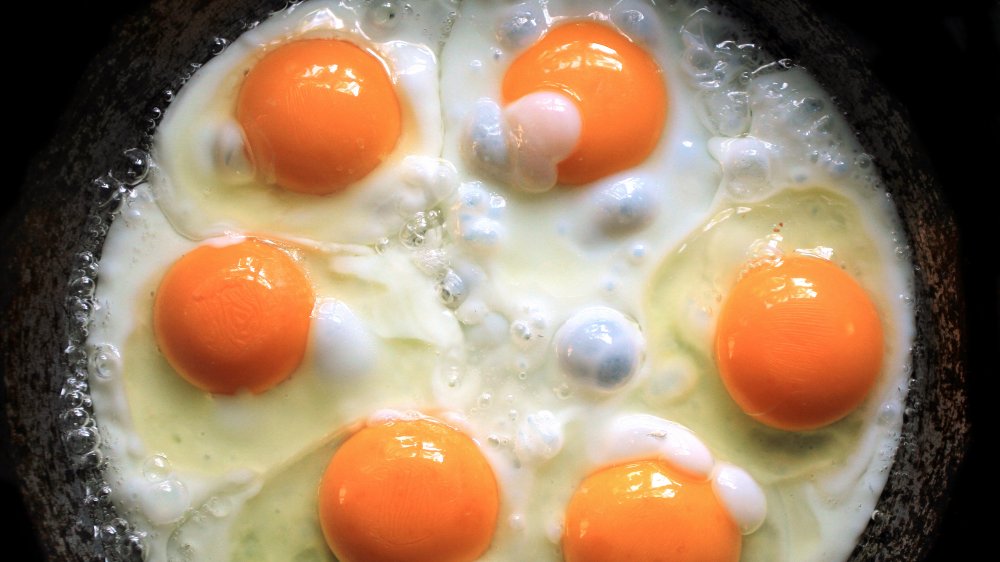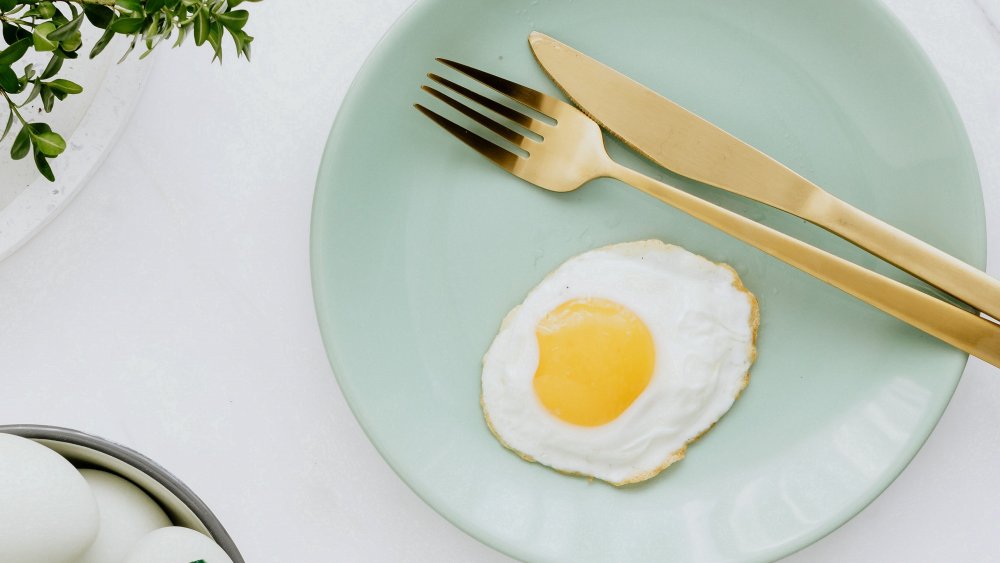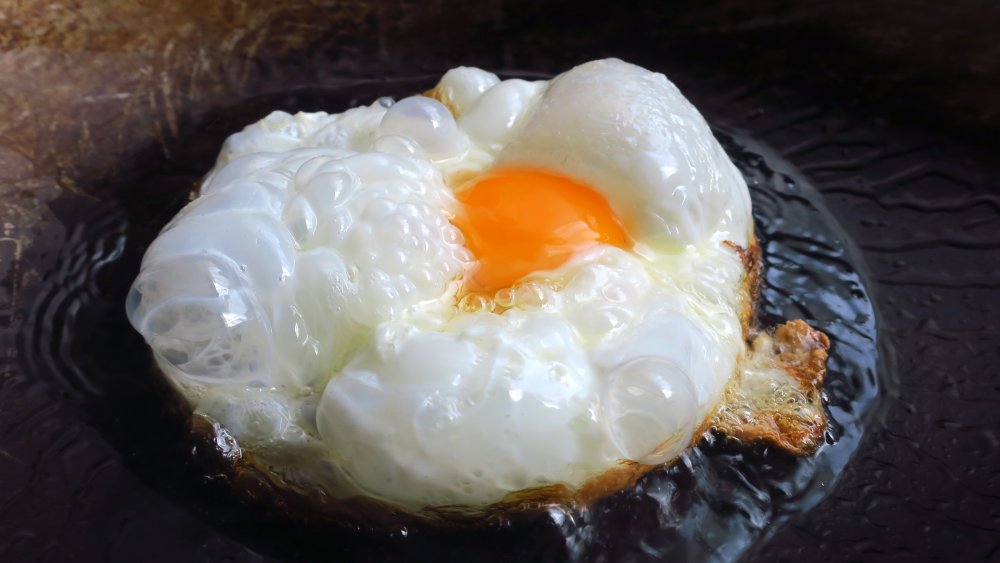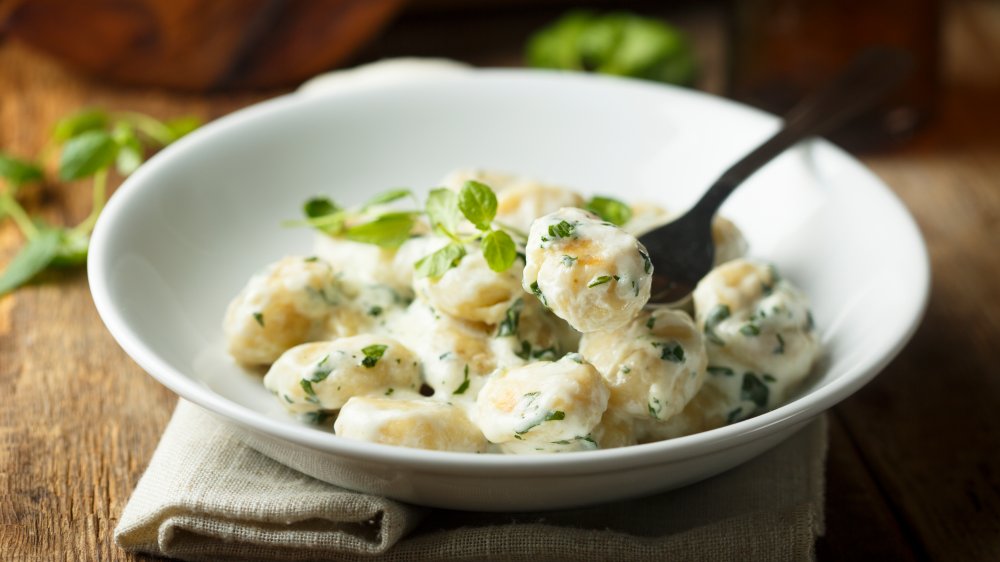You've Been Frying Eggs Wrong Your Whole Life
Breakfast is the most important meal of the day, and the star of many breakfasts is a fried egg, runny in the middle, set around the edges, and buttery in flavor. But no matter how many breakfasts you've enjoyed, it turns out you may have been frying eggs wrong your whole life.
If your usual method involves adding butter or oil to a pan, cracking in the eggs, and cooking them to your preference — sunny side up, over easy, soft on the edges, or totally crispy — you're part of the way to perfection, but there's a secret ingredient to use in your eggs that can turn them from a ho-hum breakfast staple to something worth waking up early for.
The best way to fry eggs
It may sound strange, but when frying your eggs, you should ditch the butter and oil. Instead, try frying them in heavy cream (via Food52).
It may sound strange at first, but heavy cream has a lot to offer. It's rich in butterfat, and as food blogger H. Alexander Talbot says, "Cream is sort of like liquid butter." As you cook the cream it breaks down into buttermilk and butterfat, both of which help churn out perfect eggs (via Ideas in Food).
The buttermilk gently simmers around the eggs, steaming them and cooking them gently. The remaining butterfat begins to sizzle and caramelize, resulting in a flavor that tastes similar to browned butter.
How much cream do you need to fry eggs?
Thankfully, you only need a little bit of cream in order to fry your eggs. Add a splash, and add a little more if the pan dries out before the eggs are done. You'll also need to pour the extra cream off if there's too much left over when the eggs are cooked to your liking.
Serve them over toast and you may even find that your bread no longer needs any extra butter.
You can even try this method for sauteeing veggies and meats, imbuing them with a tender texture and a caramelized exterior that's to die for.
Are cream fried eggs crispy or soft?
Some people like eggs that are fried to a crisp until brown lacy bits appear at the edges. Other people like their eggs with the whites and yolk just set, with no golden-brown pieces to be found. Of these two preferences, who will like cream fried eggs more?
The nice thing about cooking your eggs in cream is that you can actually choose how you want your eggs to come out of the pan.
If you cook them with slightly less cream and at a slightly higher heat, the cream will brown and the edges of the fried egg will get nicely crispy — just be sure not to let the cream burn.
If you like eggs that are just-set, simmer your eggs and cream on a lower heat. You may need to add cream to the pan as they cook if it starts to evaporate, but that will slow the caramelization process so your eggs don't turn brown and crispy, and the evaporating cream will help gently steam and simmer the eggs. They'll come out soft, set, and with a touch of rich cream flavor to set them over the edge.
Other foods to fry in cream
With its combined cooking powers of frying and steaming, cream is a unique vehicle for making other foods, too.
If you're not so keen on vegetables, you can try frying them in cream to give them more flavor and to add some richness. Carrots (via Ideas in Food), potatoes (via Ideas in Food), kale, and baby eggplants can all be cooked in cream, becoming soft and luscious while also getting buttery and crisp on the bottom.
You don't just have to stick to vegetables, though.
Talbot recommends cream-caramelizing things like pork chops, sausages, fish, and more. You can add other ingredients to the cream, like spices and herbs, so it becomes infused with flavor, and in turn, infuses the other ingredients with flavor.
You could also cream cook fruits to make a decadent dessert — think apples, pears, or peaches, served over ice cream or tucked into a tart shell.
It would also be a rich way to prepare gnocchi, pierogi, or pelmeni, the steam from the cream once again cooking the dumplings through before caramelizing them on the bottom. Basically, it's bound to become your favorite new cooking method when you're looking for an easy way to add big flavor to your meal, but don't feel like whipping out your Julia Child cookbook and making a 15-step classic French recipe.




